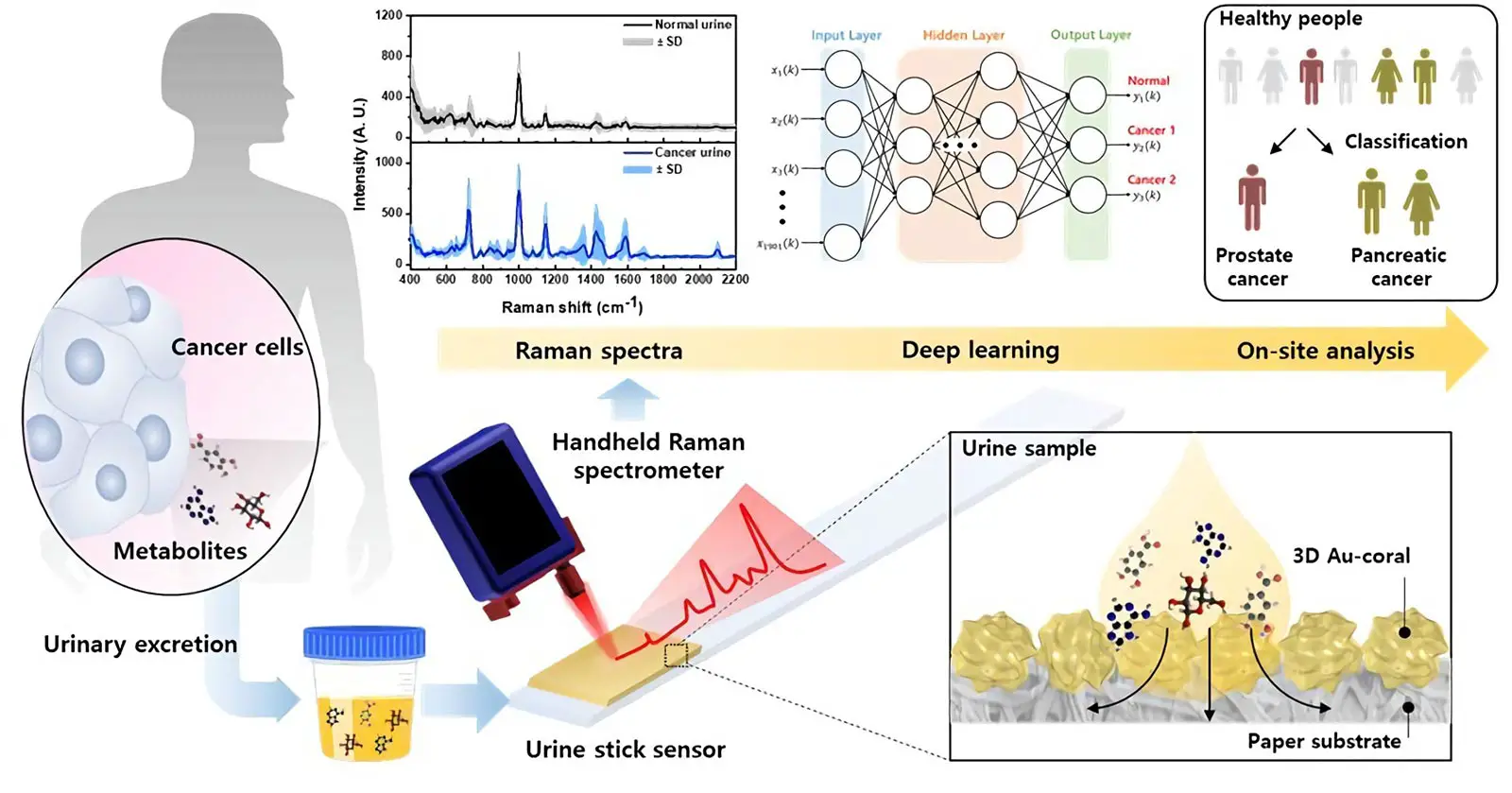Summary of New Sensor Can Diagnose Cancer Using Urine:
A research team led by Dr. Ho Sang Jung at the Korea Institute of Materials Science has developed a strip-type urine sensor that uses light to amplify metabolites in urine and diagnose cancer in the field, without the need for an additional analysis process. The team used surface-enhanced Raman scattering to amplify cancer metabolite signals in urine dropped onto a strip, allowing high-sensitivity diagnosis using artificial intelligence-based analysis. The technology, which costs less than KRW 100 per unit to manufacture, could enable on-site rapid cancer patient screening, recurrence monitoring, and new cancer diagnosis methods.
*****
A new breakthrough in cancer diagnostics has just been announced by a team of scientists from the Korea Institute of Materials Science (KIMS). They have developed a strip-type urine sensor that can amplify the light signal of metabolites in urine and detect the presence of cancer in the field.
The Science Behind the Innovation
The research team discovered that when cancer cells proliferate in the body, they secrete different metabolites into urine due to abnormal metabolism. These metabolites can be detected, even in minute amounts, with a surface-enhanced Raman scattering sensor. The team achieved this by creating a coral-shaped plasmonic nanomaterial on porous paper, which can amplify the optical signal of metabolites in urine by more than 1 billion times. When urine is dropped into the sensor and light is irradiated, cancer metabolite signals are amplified on the sensor surface, making it possible to diagnose cancer.
The team then applied an artificial intelligence-based analysis method to the acquired spectral signal and achieved a success rate of up to 99% in distinguishing between prostate and pancreatic cancer patients and normal people. The technology can be applied for the examination of such cancer types without the need for an additional analysis process by only irradiating light after a small volume (10uL) of urine is dropped at the time of the test.
What This Breakthrough Means for Cancer Diagnosis
This new technology has been manufactured in the form of a strip, making it possible to diagnose cancer quickly and with high sensitivity in the field. The strip-type design means that doctors can carry it anywhere — they can take it to remote villages with limited medical facilities or communities with limited access to healthcare. Furthermore, the production price for each strip is less than KRW 100, which translates to just a few cents per unit, making it accessible to people in economically deprived areas.
For cancers where the diagnosis method is not well-known or easily detectable, such as pancreatic cancer, the use of strip-type urine sensors opens up a new horizon in terms of early diagnosis. Early diagnosis is the most important for incurable diseases such as cancer, and this technology provides a much-needed diagnostic method. According to senior researcher Ho Sang Jung, who is in charge of the project, approximately 14 people die from pancreatic cancer daily in Korea, and the economic cost per person is about 63 million won per year. This new development, therefore, holds significant promise for the future.
Looking Ahead
The team’s research is not yet done, and they are gradually increasing the types of cancer that can be diagnosed by analyzing the urine of prostate cancer, pancreatic cancer, colorectal cancer, and lung cancer patients. In summary, they have developed a strip-type urine sensor that could be a game-changer in cancer diagnosis, including those cases where it is difficult to detect and where the survival rate after initial diagnosis is low. This development could well bring significant relief to humanity and herald a new era in cancer diagnosis.



Comments are closed